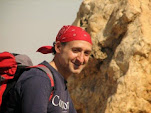So in Holistic Medicine, what's the best way to go? Herbs?
Acupuncture? Maybe what's best are Complementary and Alternative
Medicine techniques for manipulation?
The answer is probably all. A multidisciplinary approach is best in
holistic medicine, and body work and manipulation has much to offer.
Manipulation as well as body based alternative practices involve
working the structure, function, and different areas and systems of the
body; skeleton and joints, soft / connective tissue, circulatory system,
and lymph network. Some popular and well known body therapies fall
within this category.
Spinal, Skeletal, or Structural manipulation is performed by
Chiropractors, Osteopaths and by other professionals such as physical or
athletic therapists, and some conventional medical doctors as well.
Practitioners use a controlled impulse / force to a bone, joint, or the
spinal column, moving it beyond its present passive range of motion; the
force used is related to the type of manipulation needed and its
purpose and goal. These types of manipulation and treatment are among
those applied to people with low back pain which is a common ailment in
our time that can sometimes be difficult to treat.
Massage therapy may also include many different techniques. In
short, practitioners press, rub, and manipulate the muscles and other
soft connective tissues of the body. People go to massage for a plethora
of health purposes and for well being, including to reduce pain,
rehabilitation of sports and other injuries, orthopedic issues, stress
reduction, to promote relaxation, to reduce anxiety and depression, and
for general well-being.
As an Athletic Therapist I was trained to use a number of
modalities, including massage in all its glory - Effleurage, Petrisage,
Tapotement, deep tissue, friction, mobilization. I have used these, as
well as Acupressure and Trigger Point massage many times. Releasing
cramped muscles, warming up athletes, rehabilitating injuries, relaxing
and soothing stiffness. Overall in the different areas of Athletic
Therapy with much success, whether in rehabilitation, or maintenance.
Osteopathy predates Chiropractic by at least 20 – 25 years, and
apparently, funny enough, DD Palmer the founder of Chiropractic was
briefly jailed for practicing Osteopathy without a license. Structural
adjustments are a key part of Osteopathy, though today it is only one of
four approaches. Structural, Myofascial, Visceral, and Craniosacral
Osteopathy are all practiced in the field today, so Osteopathy is in
itself multidisciplinary.
I was trained in all four approaches and in a myriad of techniques
from each discipline. My recent partner whom I share a private clinic
with, and also worked with at an HMO is a licensed Chiropractor. We have
had the pleasure of treating each other many times, without regarding
each other as competition, and with mutual respect and understanding
trying to help each other. These sessions have been amazingly helpful,
stress reducing, and educational.
Plus, I originally went to study
Athletic Therapy in order to go to Chiropractic school afterwards, and
researched both fields before deciding on my path. Since lower back pain
is somewhat of an epidemic in the Western world, most people come for
Osteopathic treatments of that issue. Mind you, most people go to all
alternative treatments across the board mainly for lower back pains and
issues.
For the most part, I have mostly treated, lower back pain,
sciatica, anterior / posterior tibialis compartment syndrome, migraines /
other headaches, neck / shoulder / upper back pain, thoracic outlet
syndrome, plantar fasciitis, carpal tunnel syndrome, knee pain, ankle
pain, general joint pain and / or weakness, arthritis, tinnitus,
torticolis, child development issues, pregnancy issues and (back) pain,
digestive issues, constipation, swelling and joint pain, bed-wetting,
incontinence, and the list goes on...
In my first year of studying Classical Osteopathy, I completed a
certificate in Advanced Reflexology (I also have certificates in
Acupressure and Sports Massage), another form of Bodywork, in order to
be able to start treating people holistically, to have another tool of
diagnosis and treatment. I continue to use the tools I acquired from
Reflexology and Acupressure, especially when giving patients self-care
work and homework to do on their own.
They are very easy to do by
yourself and it gives patients excellent maintenance tools
and responsibility for their own health. I have also been treated quite
a few times with Reflexology and Shiatsu ( a form of Acupressure). I
merited to help people with jaw clenching issues, especially while
sleeping, babies and adults with constipation and digestive issues,
stress-related issues and pains, plantar fasciitis, menstrual cramps,
headaches, torticolis and other issues.
I have used Jin Shin Jitsu on myself and with clients for about ten
years now, and I recently purchased a book I have yet to read on the
Rosen Method of Bodywork, which a friend recommended.
Alternative Medicine also encompasses movement therapies—a broad
range of Eastern and Western movement-based approaches used to promote
physical, mental, emotional, and spiritual well-being. Examples include
Tai Chi, Feldenkrais method, Alexander technique, Pilates, and
Tragering.
There you have it. A tasty menu of delights to choose from for all your aches and pains.
May they all be relieved!
Monday, January 25, 2016
Subscribe to:
Post Comments (Atom)


No comments:
Post a Comment